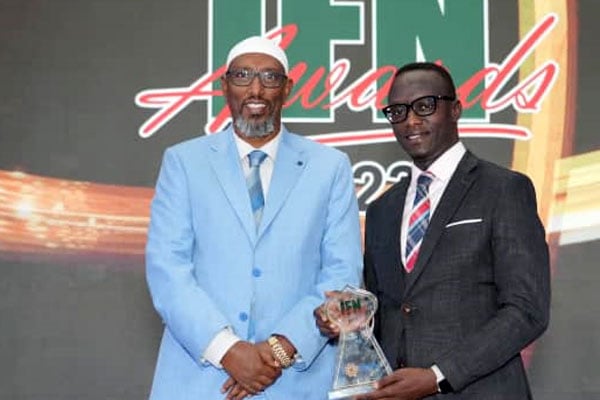Aid to Uganda hits $1.8 trillion in 2010

Primary school pupils study under trees. Education is one of the key sectors that could benefit from donor aid.
Uganda continues to be one of the top recipients of donor aid on the continent, according to latest figures from the Organisation for Economic Cooperation and Development (OECD) released on Wednesday. However, development experts say Uganda’s continued dependency on foreign aid inflows needs to be curtailed if the country’s internal potential to fight poverty is to be enhanced.
Uganda received $1,786m in 2009, an increase of $145m over 2008, to make it the 6th biggest recipient of official development assistance (ODA) on the continent. ODA does not include aid from non-governmental organisations and other institutions apart from the World Bank.
In the region, Tanzania ($2,934m) is the leading recipient of ODA in the region, while Kenya ($1,778m) follows Uganda. Kenya however, saw the biggest increase in ODA volumes ($415m) over 2008 figures.
The US has maintained its position as Uganda’s largest donor; but regional counterparts Kenya has displaced Uganda from the list of the US’s top 10 aid recipients in the world.
The main drivers of donor aid are humanitarian need, strategic importance, and economic potential of the recipient country. But in recent years, it has also been found out that the criteria for determining what countries should get the most development assistance are often heavily dependent on bilateral relations and the geo-interests of the specific donor countries. However, most donor countries appear to tie their aid to good governance, aid effectiveness and accountability.
Last year, a group of 11 development partners cut aid to Uganda citing the lack of government action to follow up on cases of grand corruption, which they said was a key concern.
In recent years, President Yoweri Museveni has been a strong advocate of plans to reduce dependency on foreign aid. Revenue collections have hit record levels, and are expected to peak at over Shs5 trillion this year, which is 13.2 per cent of GDP. Currently, donor support accounts for about 26 per cent of Uganda’s budget down from 46 per cent five years ago.
However, the UN and the OECD say developing countries need more money if they are to achieve the seemingly elusive MDGs by 2015.
However, Dr Augustus Nuwagaba, a development expert and professor at Makerere University, dismissed claims that foreign aid was an altruistic tool designed to bring about development in poor countries like Uganda. He said Uganda continues to receive colossal sums of money in aid but development is still elusive because economic transformation must come “from within not from without.”
“The so called Asian tigers developed not because of aid but because of having effective States, serious governance and positive attitudes of the people to work,” he said. “The little aid they received fell on fertile ground, which is obviously not the case in poor countries like Uganda.”
He said aid ends up crippling the recipient countries due to lack of strong mechanisms to absorb it, which eventually breeds corruption.
“Development must be driven from within with donor aid just helping to propel it,” he said.
Mr Elly Twineyo, a development policy expert and the executive director for the African Centre for Trade and Development, agreed.
He said Uganda should be looking more at “aid exit” by focusing on dealing with the indigenous factors that keep people in poverty and the external barriers that keep Ugandan products from foreign markets.
“The aid architecture is designed to keep our countries aid-dependent,” he said. “What we need more is access to foreign markets so that our people are make their own money instead of having to depend on handouts.”
According OECD figures, the East African region receives most of its ODA from the US, underlining the country’s interests in the region, Tanzania tops the list of British and Swedish ODA recipients, while Uganda tops the list of ODA recipients from the European Union. Uganda also tops the list of Ireland’s top 10 ODA recipients in the world. The US is Uganda’s top ODA provider followed by the World Bank and the EU.
Tanzania has maintained its position as the second biggest receiver of ODA in Africa and features among the top 10 aid recipients in the world. Decisions on where to allocate ODA are made basing on the principle that aid is most effective when it reinforces sound political, economic, and social policies that promote poverty reduction through economic growth.
The US and the European Union are the top donors to Africa, followed by the World Bank, France and the United Kingdom. Denmark, Luxembourg, the Netherlands, Norway and Sweden continued to exceed the United Nations ODA target of 0.7% of GNI. The largest increases in real terms in ODA between 2009 and 2010 were recorded by Australia, Belgium, Canada, Japan, Korea, Portugal and the UK. Aid flows from OECD Development Assistance Committee (DAC) donor countries totaled $129 billion in 2010, the highest level ever, and an increase of 6.5% over 2009. This represents about 0.32% of the combined gross national income (GNI) of DAC member countries, less than half of the United Nations ODA target of 0.7 per cent of GNI.
In 2010, the largest donors by volume were the United States, the United Kingdom, France, Germany and Japan. Denmark, Luxembourg, the Netherlands, Norway and Sweden continued to exceed to United Nations ODA target of 0.7% of GNI.




